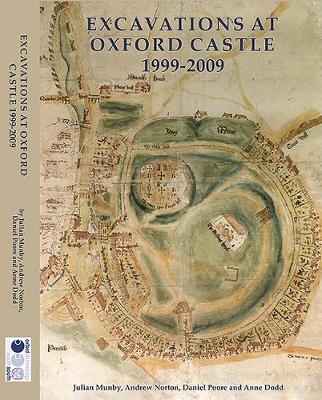Oxford Castle was built in 1071 at the west end of the thriving late Saxon town. Although it was never a castle of the first rank as a royal or seigneurial stronghold, it was an active county castle throughout the medieval period. Largely abandoned by the late 16th century, it continued to serve as the county gaol; new gaol buildings reflecting contemporary ideas on prison reform were constructed in the 18th century, and again in the 19th century when Oxford Prison adopted the ‘separate system’. The closure of the prison in 1996, and the subsequent redevelopment of the site, provided the opportunity for archaeological investigation between 1999 and 2009.
This volume reports and discusses the results of the excavations, building recording, documentary research, and the specialist finds and environmental analyses. The most substantial results relate to the late Saxon town and its rampart, and to the construction of the Norman motte and bailey castle and its defensive rampart and ditches. More limited information was obtained for the castle in its later medieval form and for its brief refortification during the Parliamentary occupation of Oxford in the Civil War. Numerous human burials found at the site are reported, including an important group of early post-medieval prisoners who had been dissected (or ‘anatomised’). A number of innovative later prison buildings surviving at the site are described and discussed, and the evidence for the castle chapel of St George and the date and function of the associated St George’s Tower are considered in detail.
- ISBN10 1905905459
- ISBN13 9781905905454
- Publish Date 10 September 2019
- Publish Status Out of Print
- Out of Print 19 March 2021
- Publish Country GB
- Imprint Oxford University School of Archaeology
- Format Hardcover
- Pages 520
- Language English
